The EURO 2024 tournament has, so far, been nothing short of a wonderful footballing spectacle. We’ve seen some excellent individual and team goals, a range of interesting and thought-provoking tactics, a lack of refereeing controversy, and the so-called ‘smaller’ nations putting in some incredible performances.
While we have seen Group A and (by the time this article goes live) Group B resolved with no real surprises as to who has qualified for the knockout stages, one group, in particular, is still wide open, with the final round of games yet to be played. The group in question, of course, is Group E – all four teams find themselves on three points after two games, making for a truly tense finale on Wednesday when Slovakia face Romania at the same as Ukraine vs Belgium. Goal difference could turn out to be a crucial factor in who claims a top-three spot – Ukraine currently fall short here with a -2 GD, while Romania and Belgium both currently have +1: Slovakia have 0.
In this tactical analysis, we will take a look at what key tactics we should see from all four teams in their remaining group games. The analysis will consider the tactics used by the teams up to this point in the competition, as well as any weaknesses they could exploit in their opposition.
Slovakia vs Romania
Prior to this tournament, Slovakia liked to play out from the back with a makeshift back three. This back three was made up of their two centre-backs and an accompanying central midfielder, and this shape allowed the full-backs to push on into higher and wider positions to contribute to midfield phases. We can expect to see more of that against Romania, particularly given Romanian’s tactical showings in the opening two Group E games.
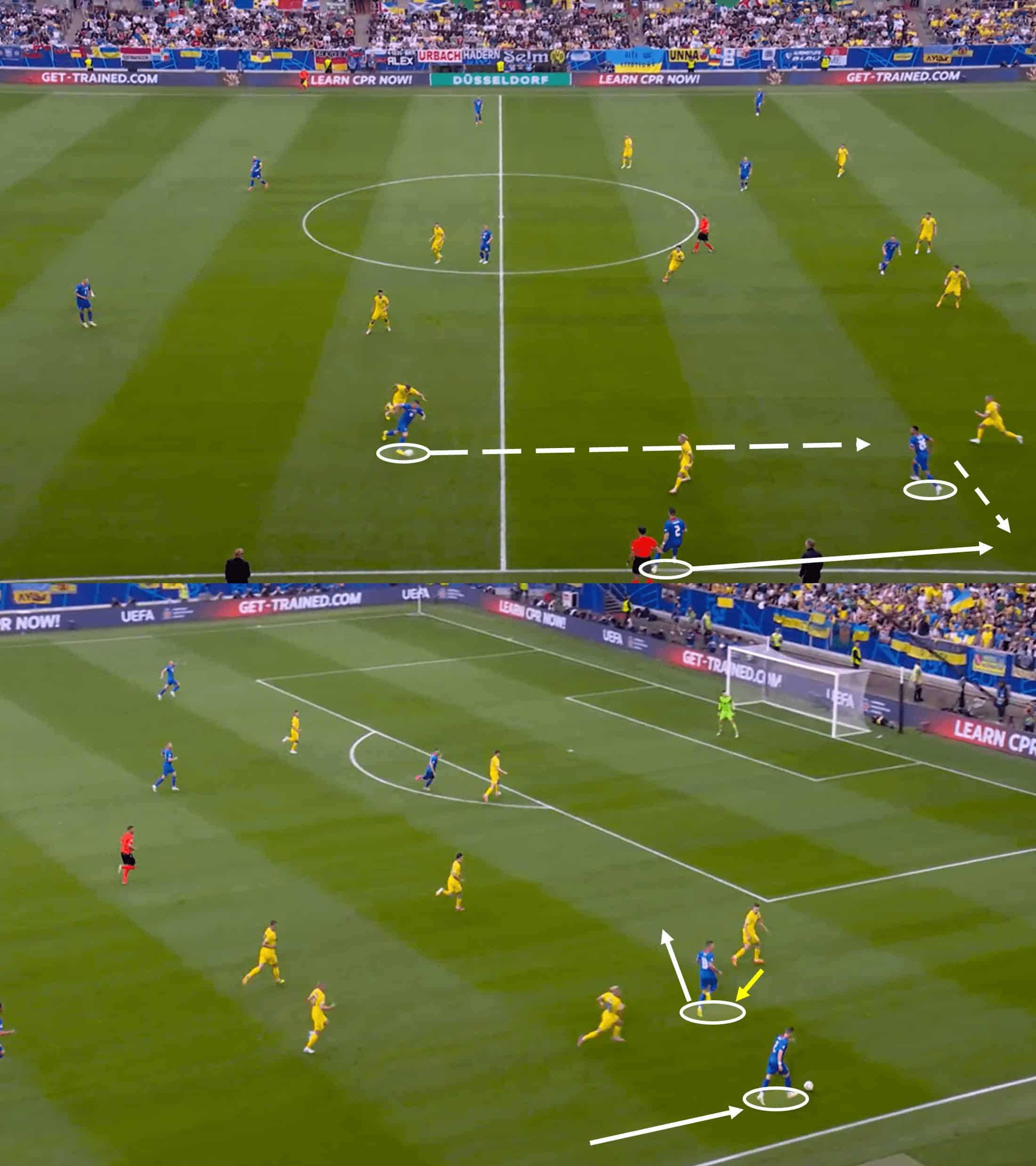
Another thing to expect from Slovakia is an injection of pace and/or directness in their build-up play once they reach the midfield area or the final third, as well as having the courage to take risks on the ball – we’ve also seen them utilise a numerical presence and passing combinations in wide midfield areas to progress into dangerous positions, as seen in the image above.
The technical skill and quick forward passing from Juraj Kucka in midfield, followed by a snappy, first-time pass out to Peter Pekarík, allowed the RB to take the ball forward into the final third quickly. Kucka’s continued run after his initial pass provided good support to the fast-moving attack, and his positioning and off-the-ball movement meant that the Ukraine left back had to follow Kucka rather than coming out to close the ball down. This gave Pekarík the time to pick out a cross into the box. We should expect to see this kind of approach against Romania, in terms of a patient start to the possession, but the ability to turn the pace up in the blink of an eye.
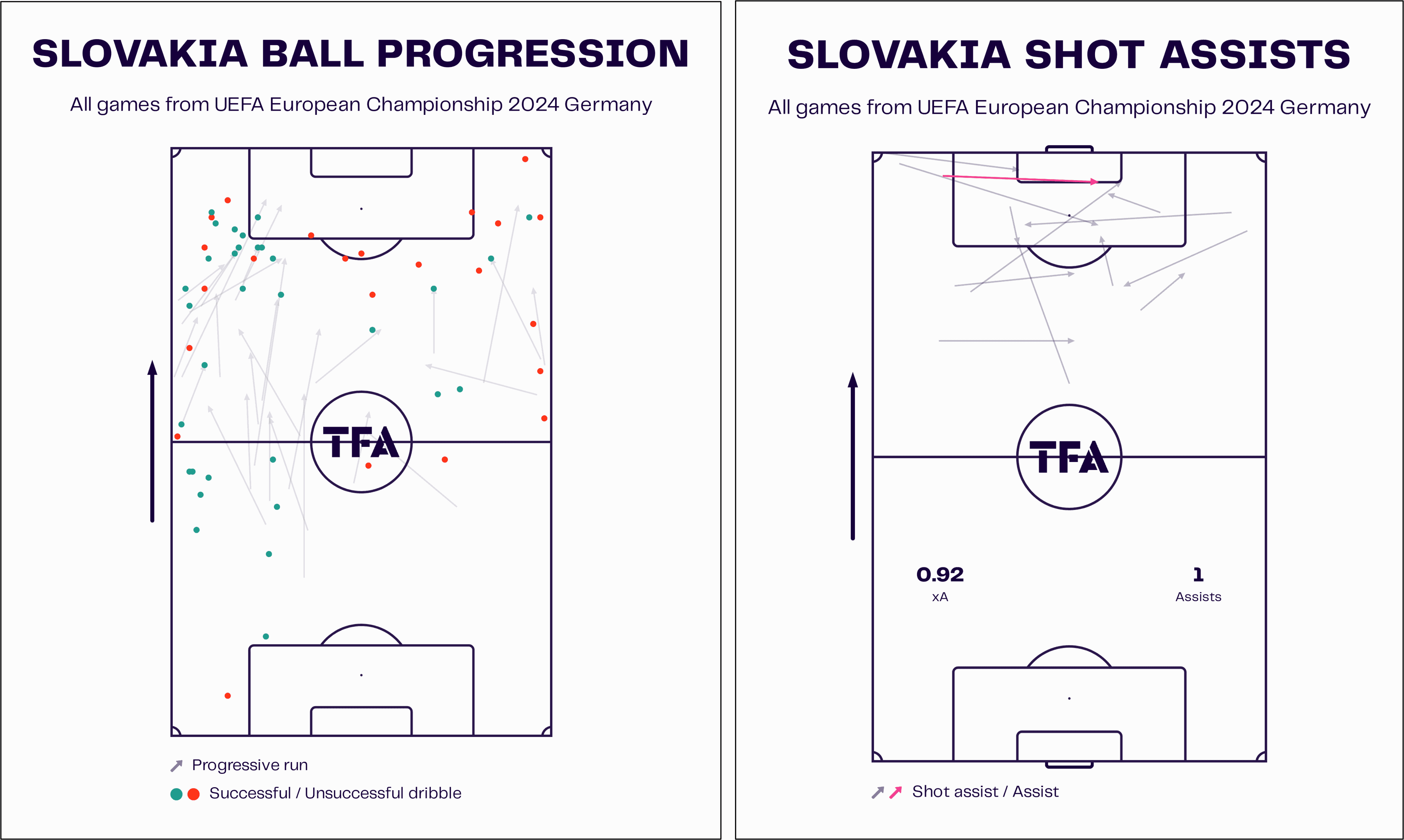
When it comes to ball progression, we should expect much of Slovakia’s play to originate from the left flank—as the image above tells us, so far this tournament, they’ve seemingly favoured that left side in terms of moving possession forward. However, as you can see above, they still offer the ability to provide dangerous shot assists from the right flank.
Slovakia’s opponents, Romania, have taken a more defensive approach so far in this tournament – nobody can argue with their tactics, though, as they currently sit top of Group E as they’ve scored more goals. We can expect a similar defensive foundation against Slovakia as Romania will look to disturb their midfield patterns.
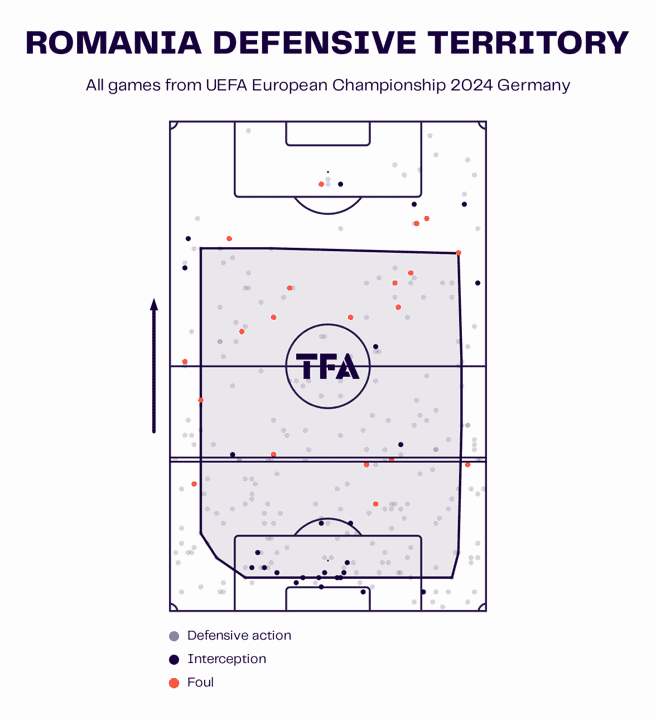
Above, we see a representation of Romania’s defensive activity and location. High-pressing really isn’t a weapon they often wield, as evidenced by the visual above and certain pressing metrics. So far in the EUROs, Romania’s PPDA sits at 16.04, while their challenge intensity rests at 4.5. Both of these numbers actually aren’t too dissimilar from Slovakia’s. Hence, there is a chance we see Romania flip the switch and press Slovakia high, but it is more likely that the Slovakians take the more aggressive approach, with Romania having less possession.
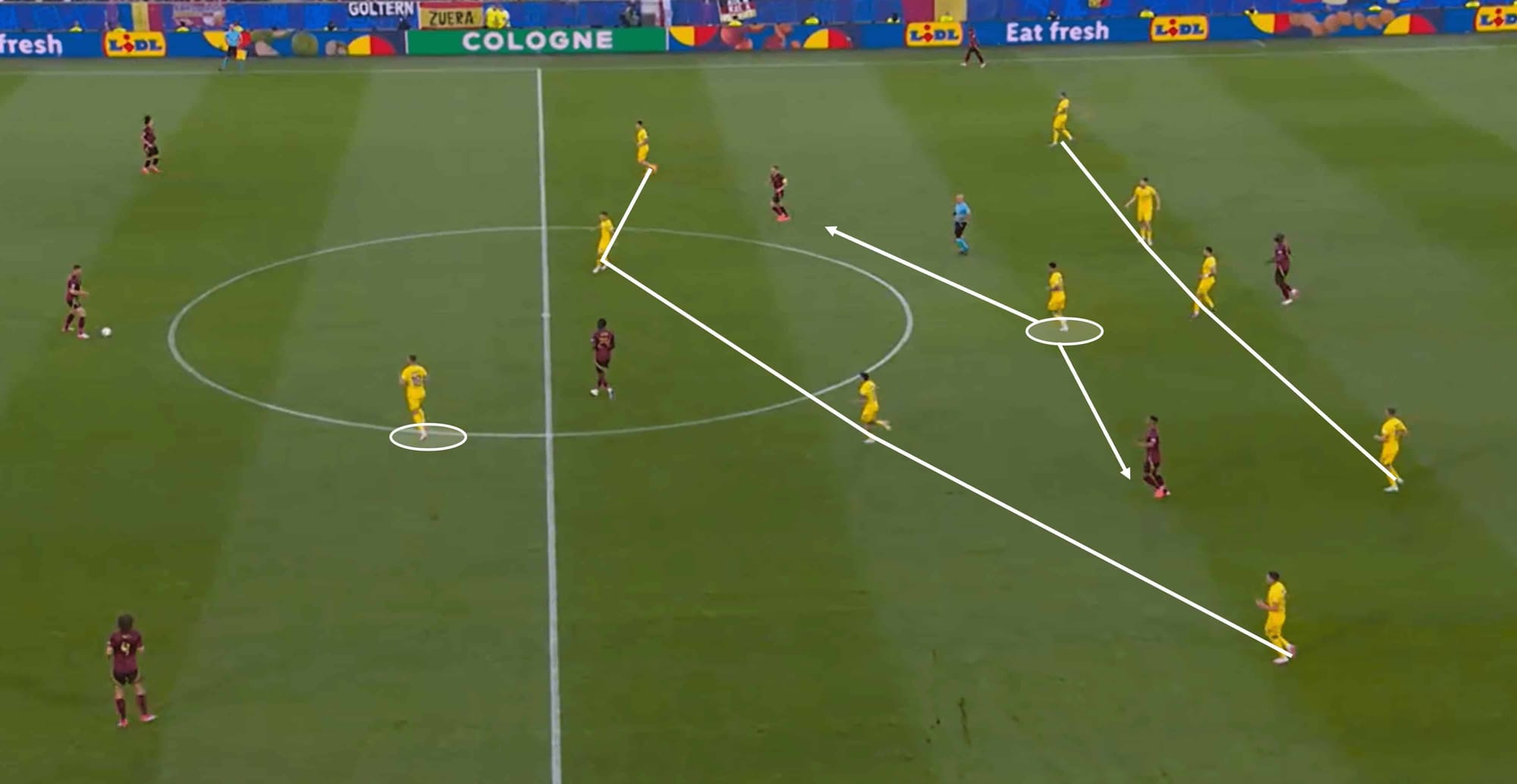
Romania have been prepared to defend in this competition, but parking the bus hasn’t been their style – the PPDA and challenge intensity numbers aren’t those of a high-pressing team, but they also aren’t anywhere the lowest in the tournament. With that in mind, expect Romania to deploy a mid-block out of possession, inviting the opposition on in those early phases of possession.
In their 4-1-4-1 shape, the back four will be narrow, with little space between them and the deep midfielder, who will aim to protect the backline when needed. The midfield unit does sometimes have more width, which allows the wide midfielders to support the full-backs, but this must be executed well and with caution, as a team with Slovakia’s midfield quality could exploit space in the engine room.
In terms of their attacking threat, Romania will look to utilise clever off-the-ball movement in midfield and the final third while also showing some threat in counterattacks and attacking transitions. Furthermore, they have displayed a danger from attacking corners – varied methods including some impressive short corner routines, all of which Slovakia need to be ready for.
Ukraine vs Belgium
This game could throw some real curve balls, tactically speaking. So far in this competition, they’ve both utilised possession-based tactics – Ukraine have the fifth-highest possession rate with 55.7%, while Belgium have the fourth-highest with 56.6%. What is particularly interesting is the approach they take when they have the ball, as they differ somewhat.
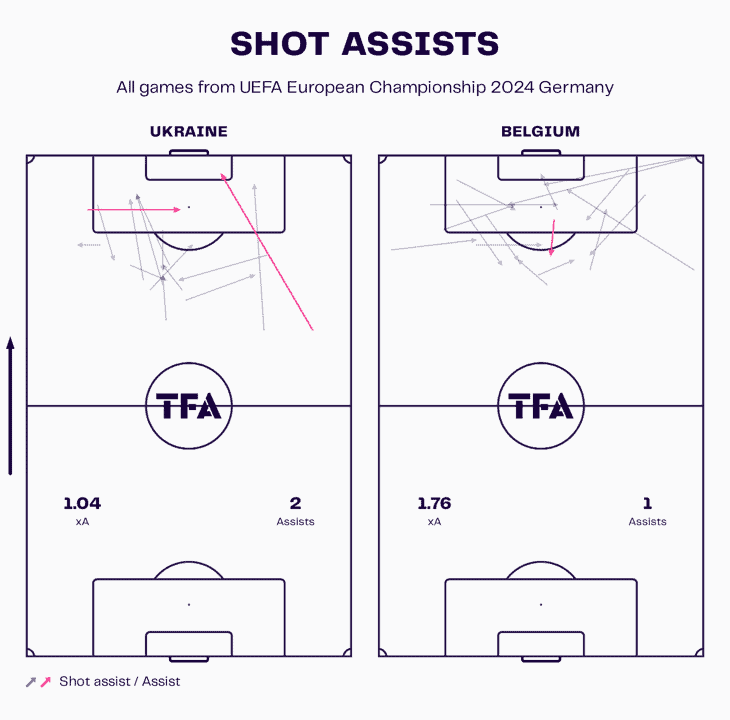
One piece of evidence of their differing approaches lies in their chance creation. Belgium’s 4-2-3-1 allows for more width in possession, which is why, as seen above, they’ve produced more shot assists from wide areas than Ukraine.
Ukraine’s danger from central areas has been noted in their opening two Group E games, with the wingers causing some problems for the opposition by cutting inside and operating in a more central zone.
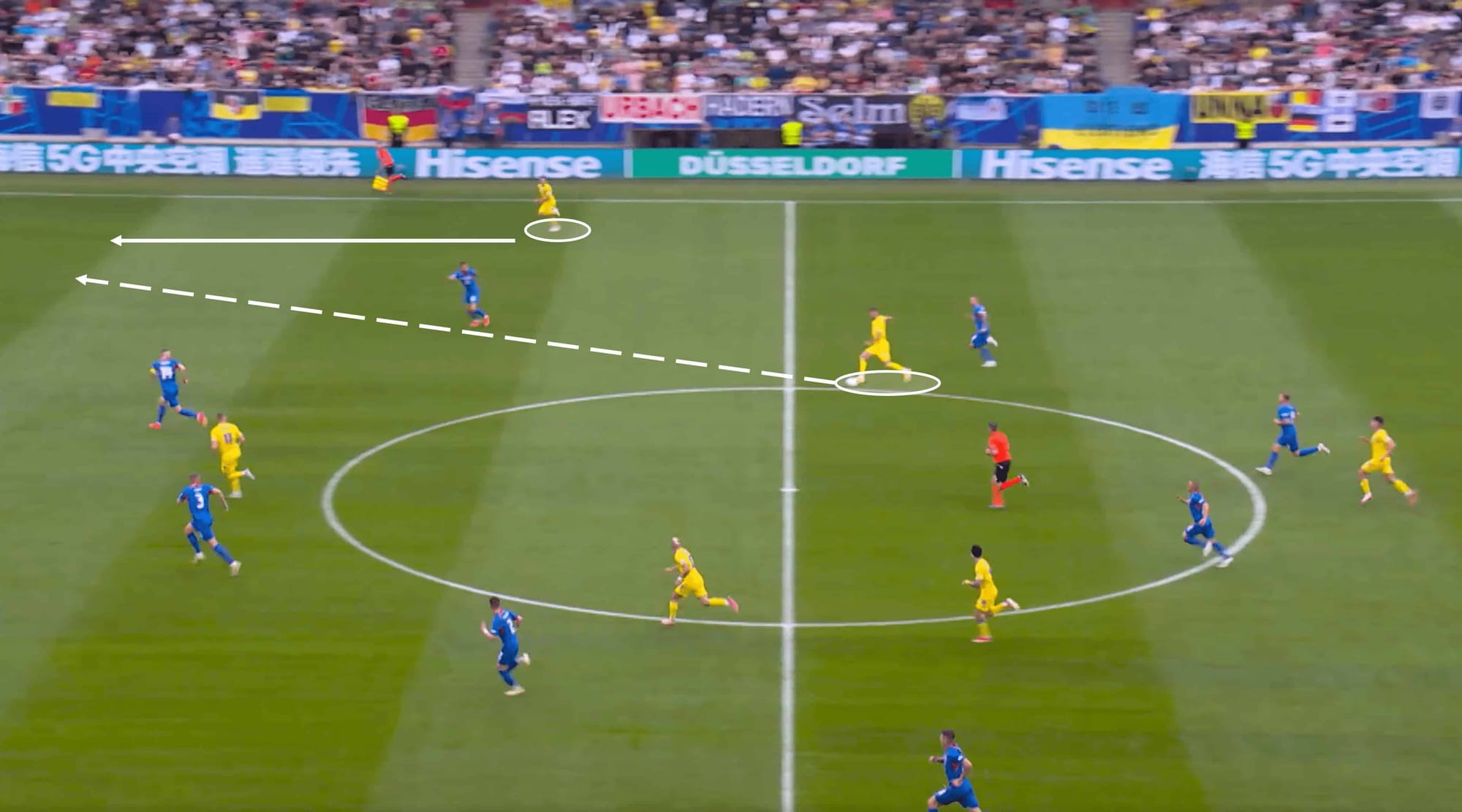
We may see Belgium take the reigns when it comes to controlling the majority of possession in this fixture, but Ukraine’s attacking approach lends itself to non-possession-based tactics as well. For example, they are hugely accustomed to utilising progressive passes as they want to get the ball into the attacking unit as quickly as possible. Their pace and 1v1 ability in those areas can cause enormous problems for the opposition – even more so when Ukraine quickly put the ball into more advanced areas rather than slowing the play down.
So far in this tournament, Ukraine have recorded an average of 63.45 progressive passes per 90 (sixth highest in EUROs), signalling a true intent behind these actions. Good execution with progressive passes can be a useful tool in an array of scenarios, including attacking transitions, as you see in the image above. If Ukraine do take more of a back seat in this one in terms of possession, we could see moments similar to this one be recreated.
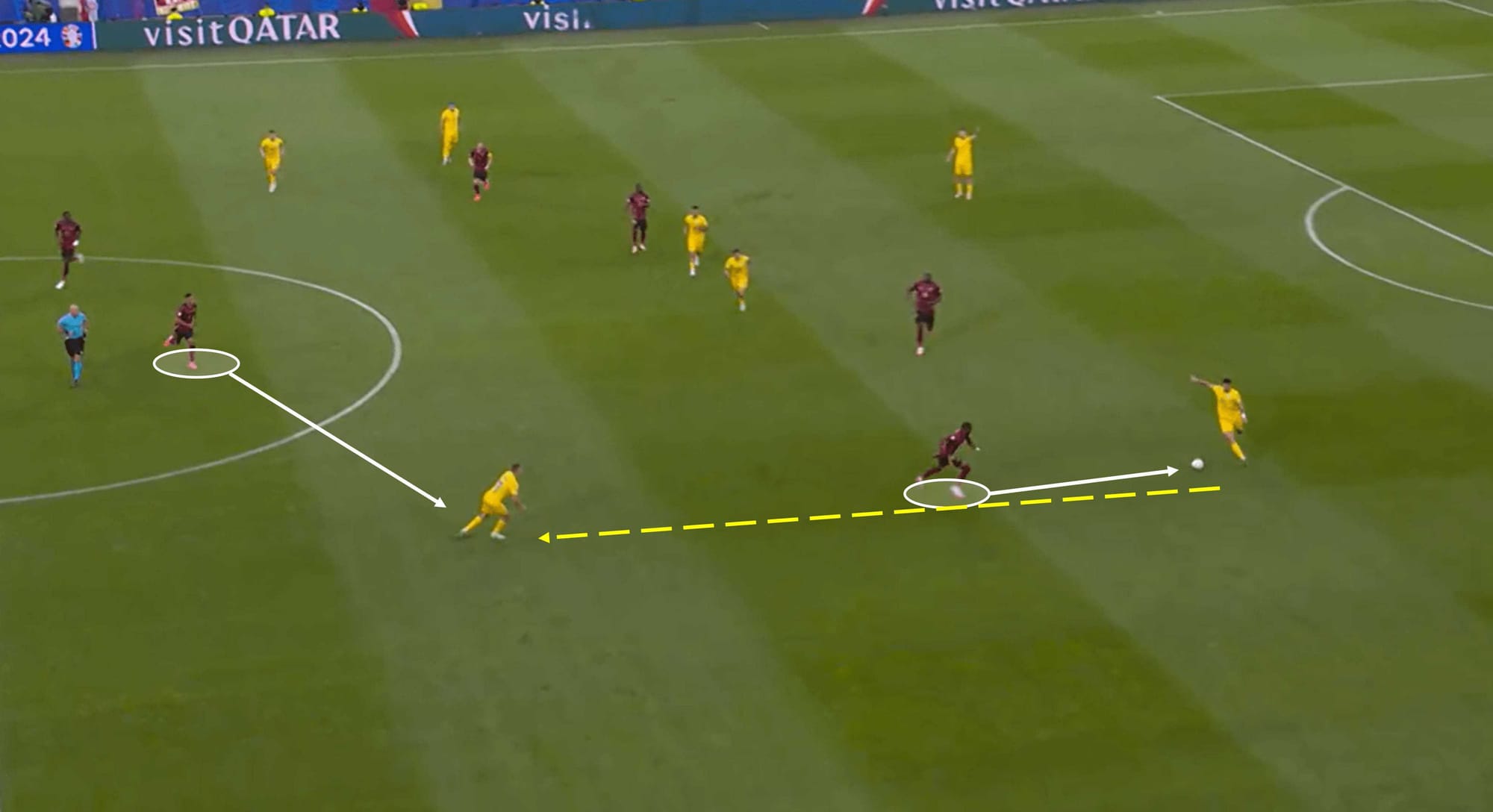
We touched on Belgium’s possession-based approach and how we could see that again against Ukraine. We’ve also discussed their ability to create goalscoring opportunities from both wide and central areas, but another important part of their tactics in this EUROs, particularly in their last game against Romania, is counterpressing.
The example above came very early in that encounter but it set the tone for the game for Belgium in terms of transitions, and this particular example led to an early Belgian goal. Not only do they look to close the ball down quickly, but the Belgian player shows good awareness to quickly close down the next likely passing option.
There is, of course, the possibility that Ukraine take control of possession – they certainly will have some strong possession-based spells, and in those moments of transition, as well as those moments of uncertainty on the ball – pressing triggers, Belgium could look to punish them with by flooding the ball and surrounding players. After all, Belgium currently have the tournament’s third-lowest PPDA (8.6) and the fifth-highest challenge intensity (5.1), so we know Belgium will look to be aggressive when Ukraine have the ball.
Conclusion
Predicting the final league table in Group E makes for very difficult work. While we have outlined some of the key tactics to expect from each of the four sides fighting for a place in the knockout phase, we’ll leave the prediction of the results of matchday three to you! Can Belgium’s off-the-ball aggression stagnate Ukraine’s fast play and progressive passes? Will Romania’s so far solid mid-block be penetrated by Slovakia’s clever combinations in midfield? We’re set for a gripping finale to Group E – and it is worth remembering that third place in this group is likely to qualify. One thing is for certain: we are past the point of teams being happy with a draw.

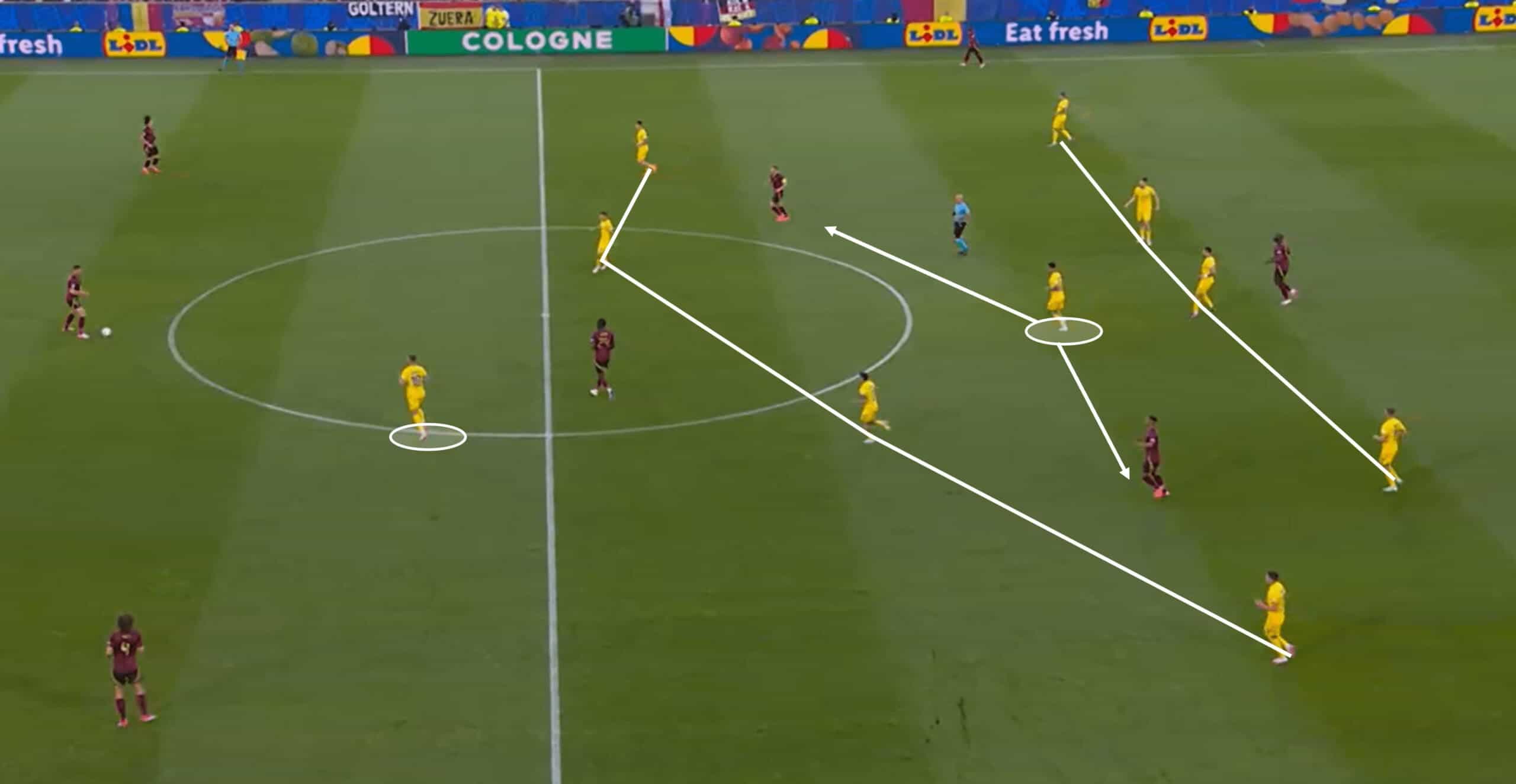




Comments